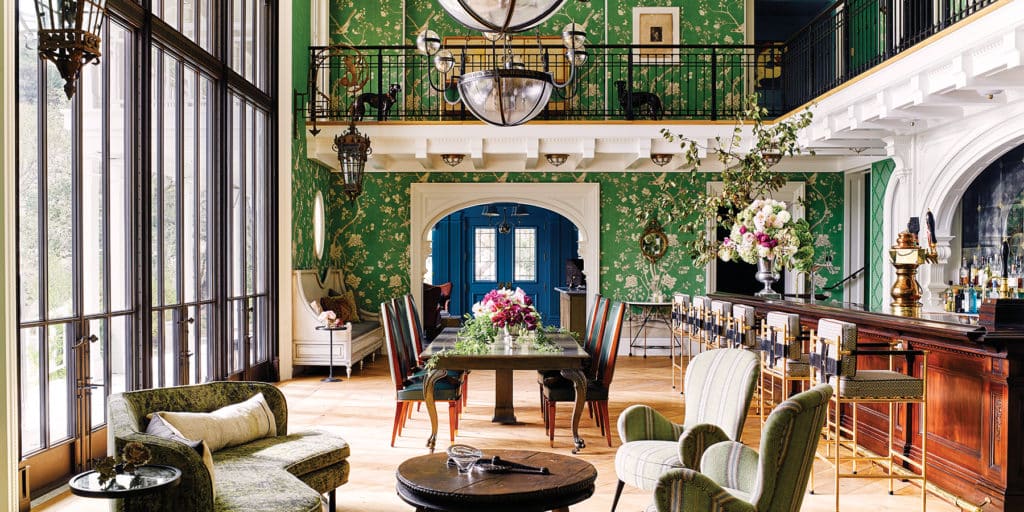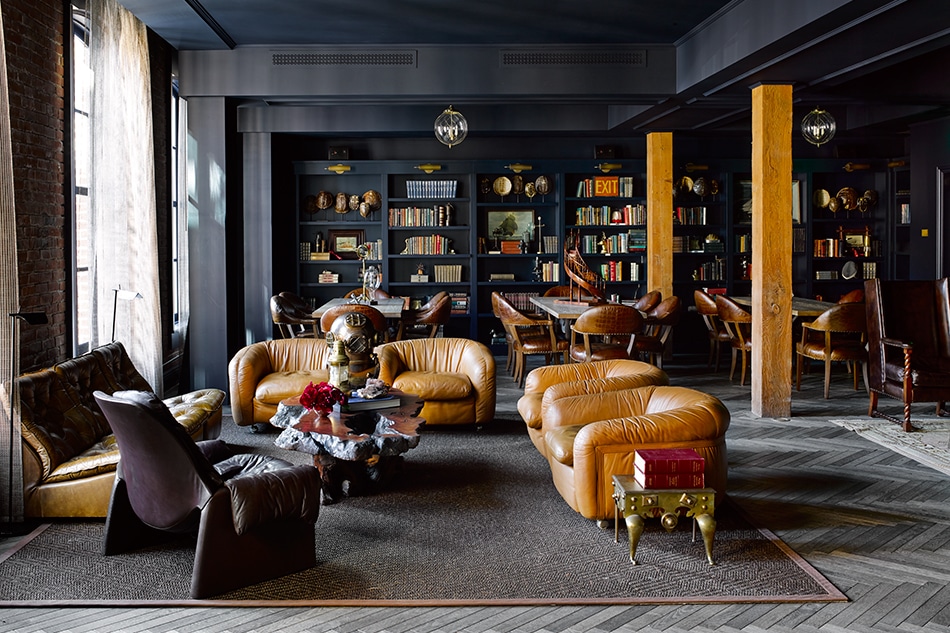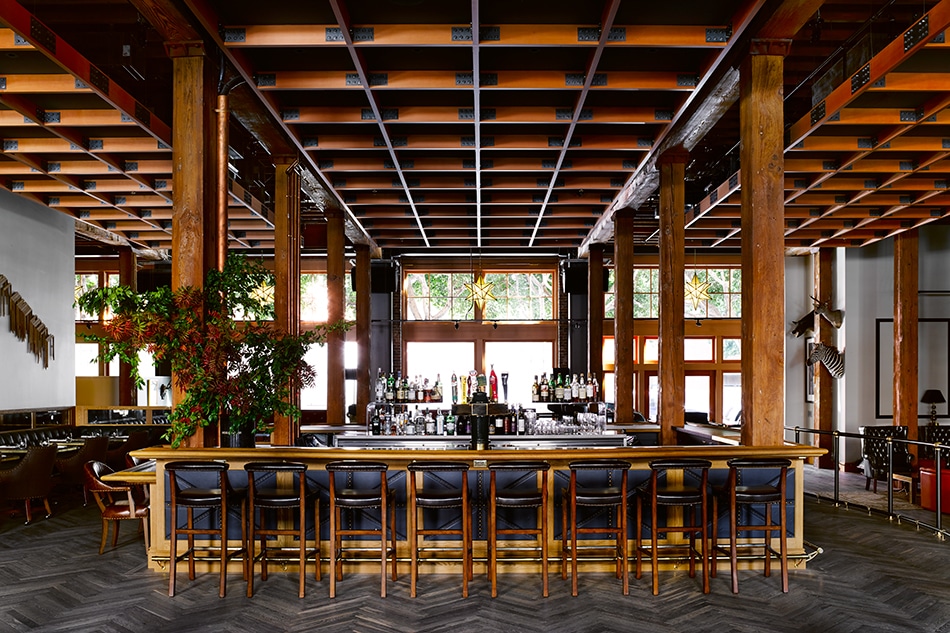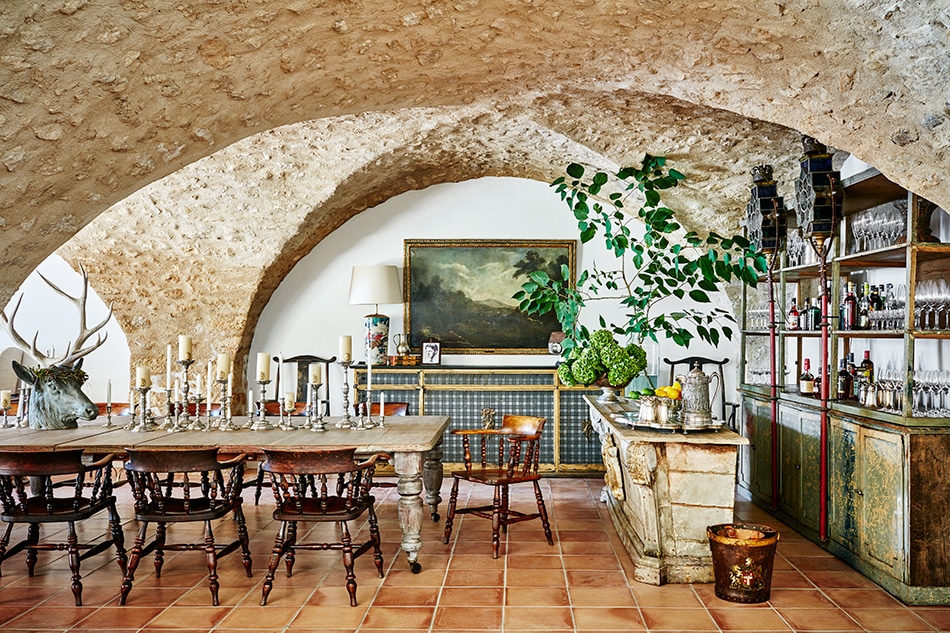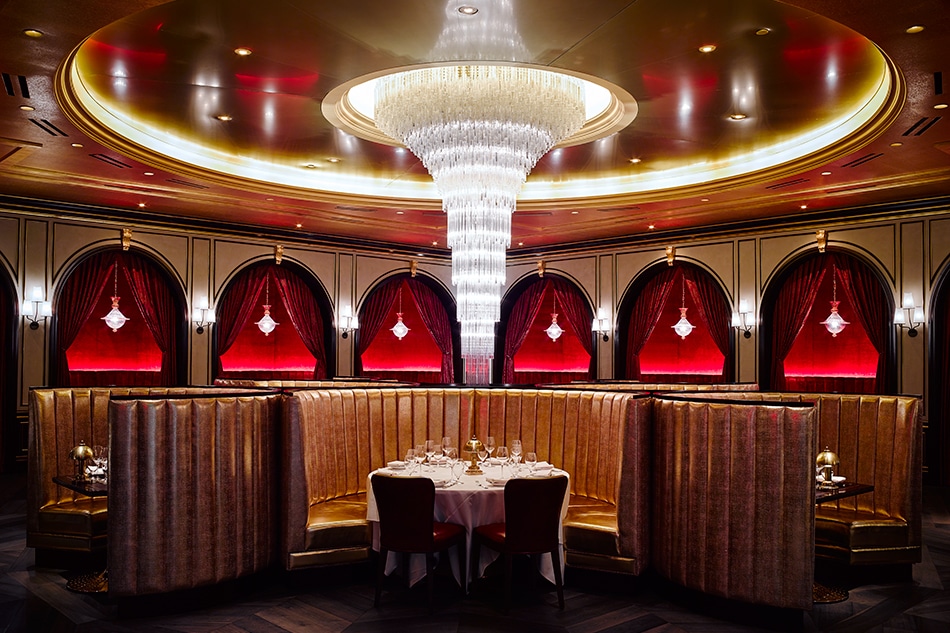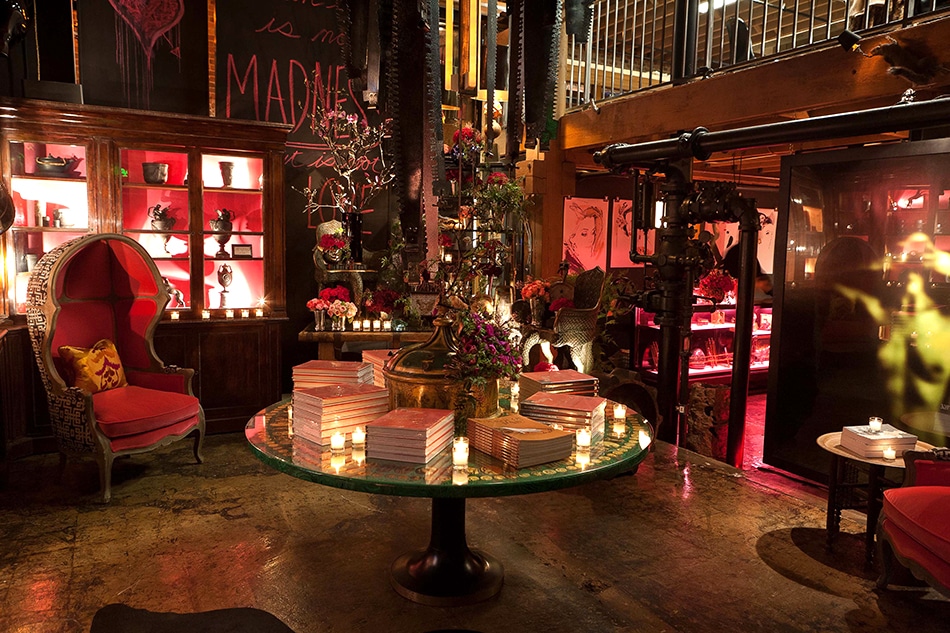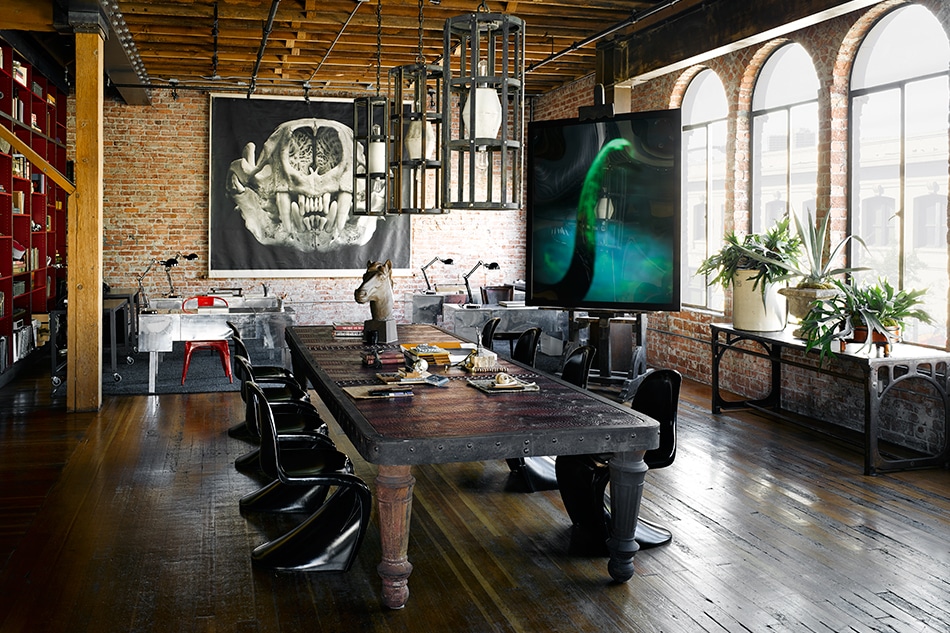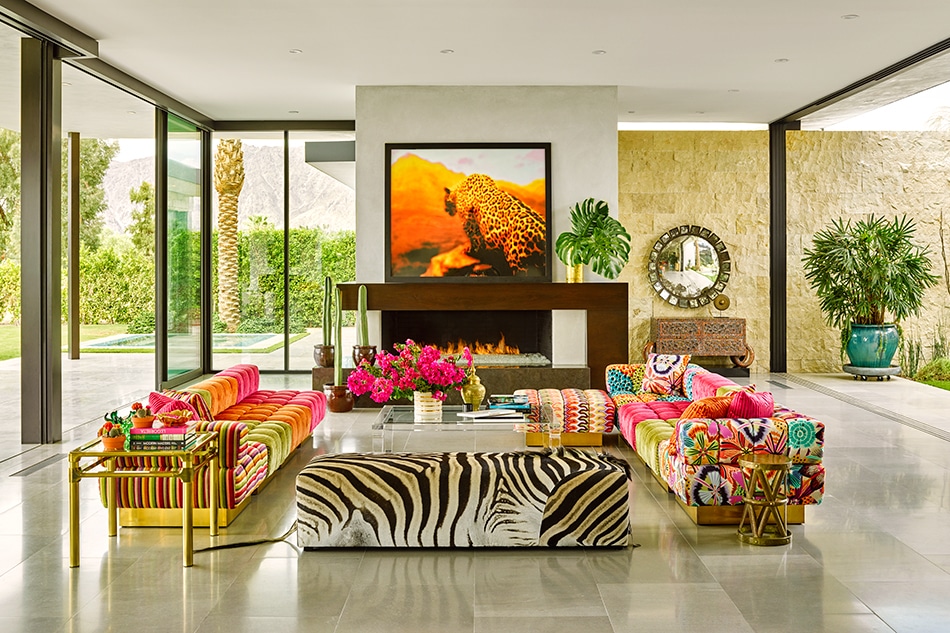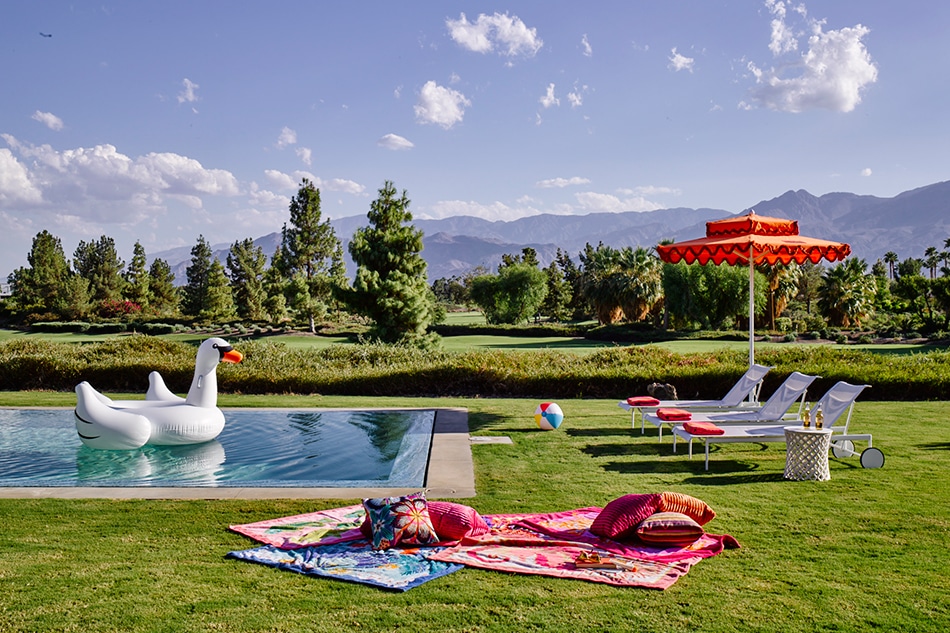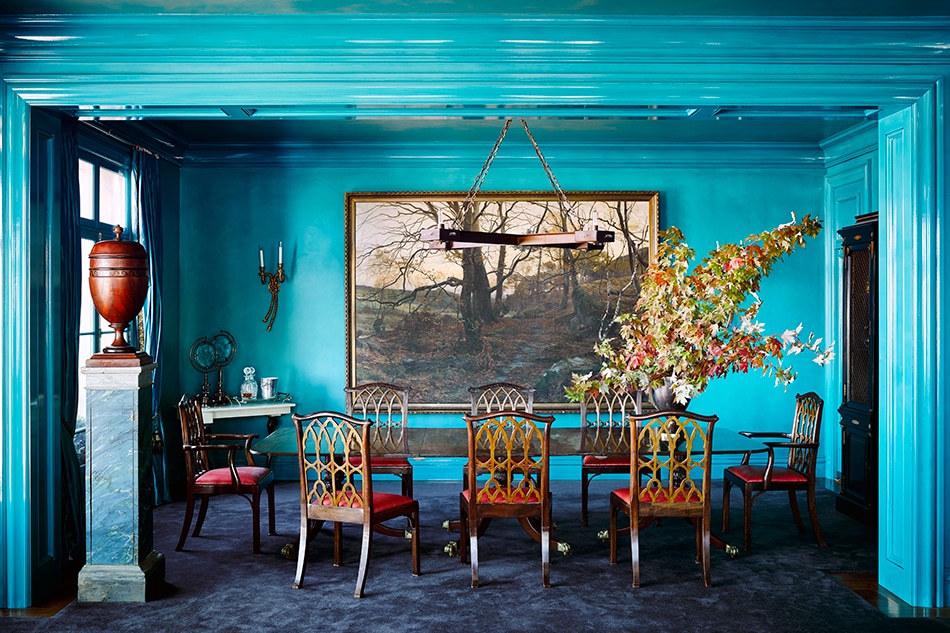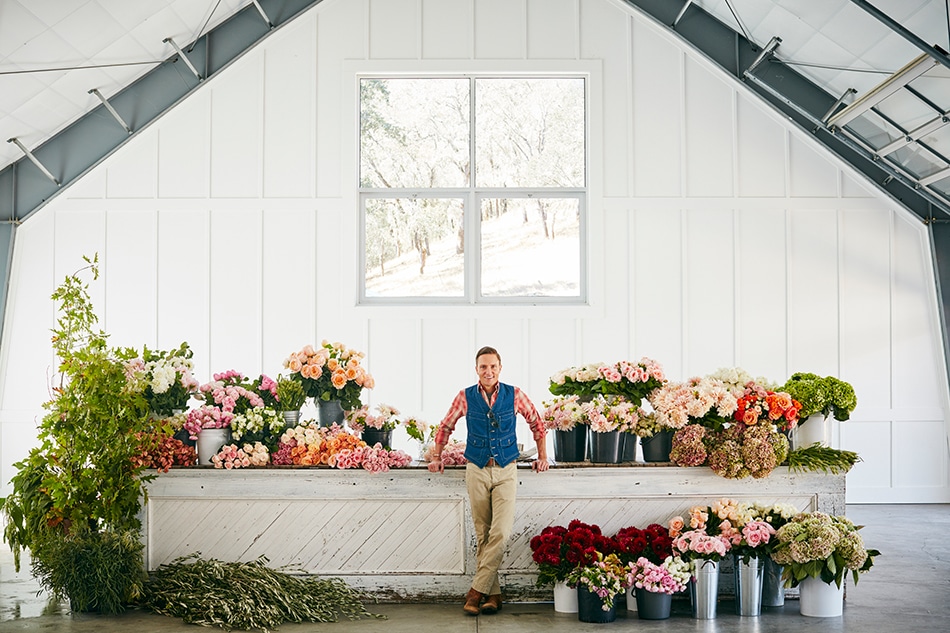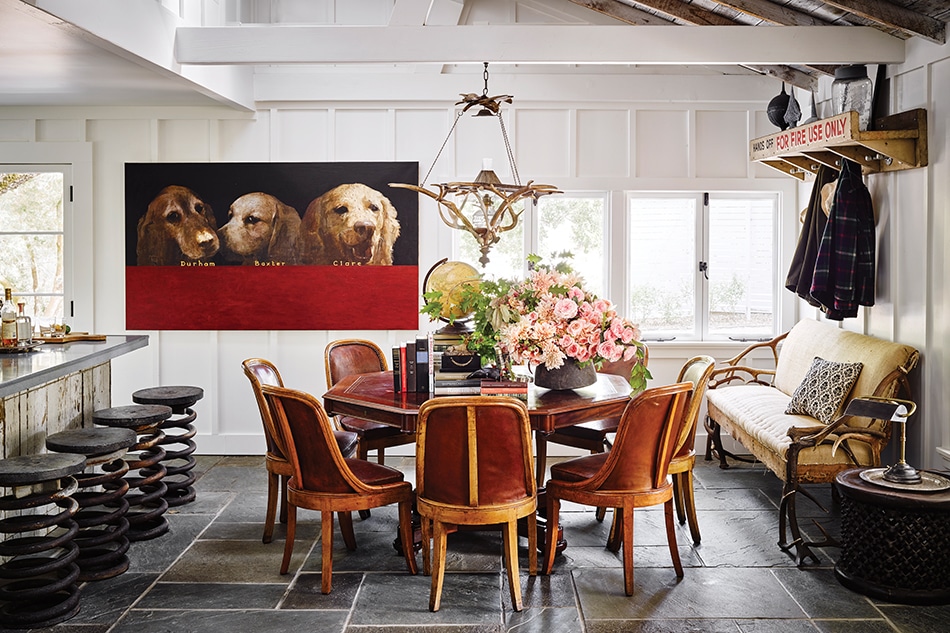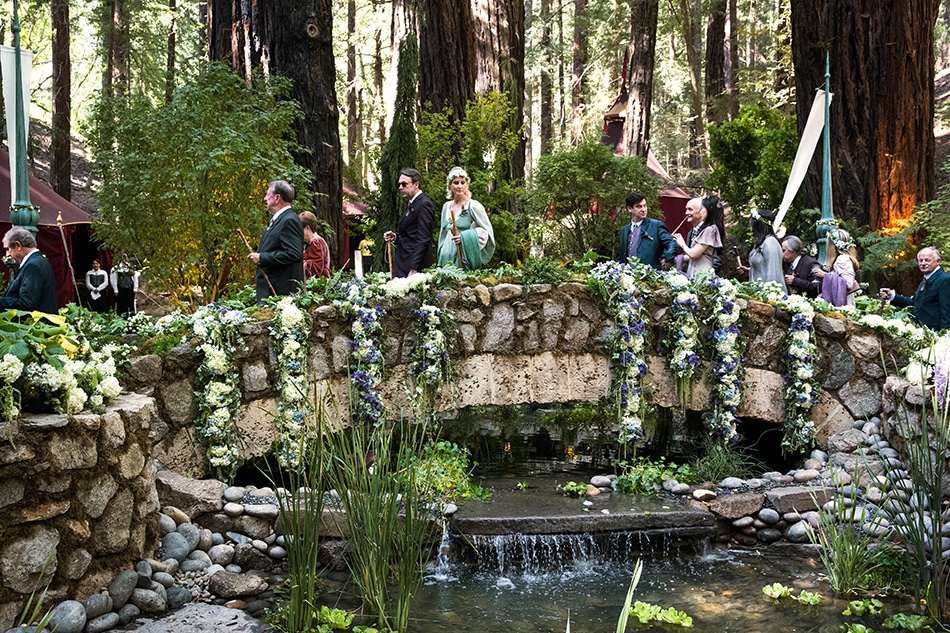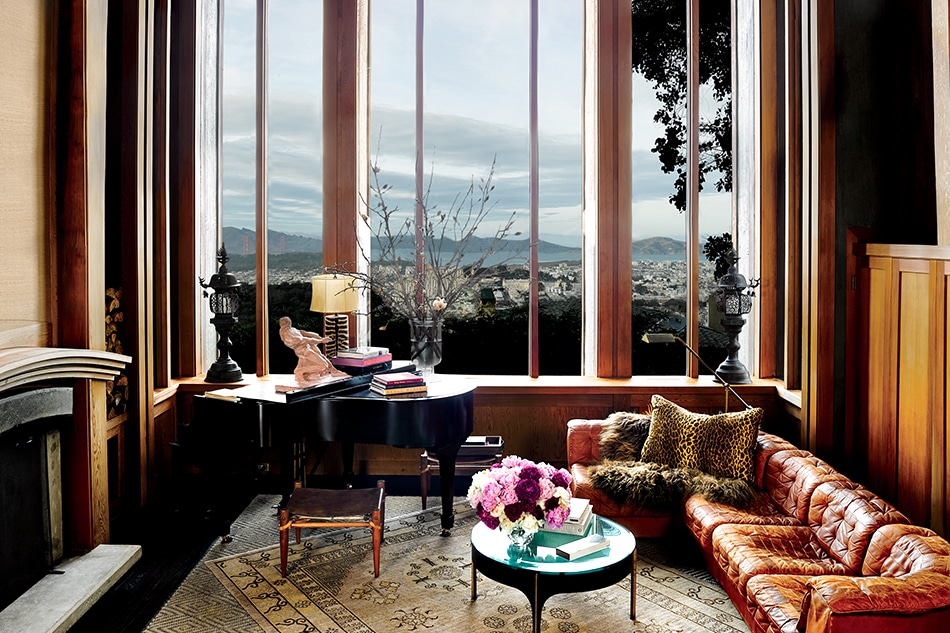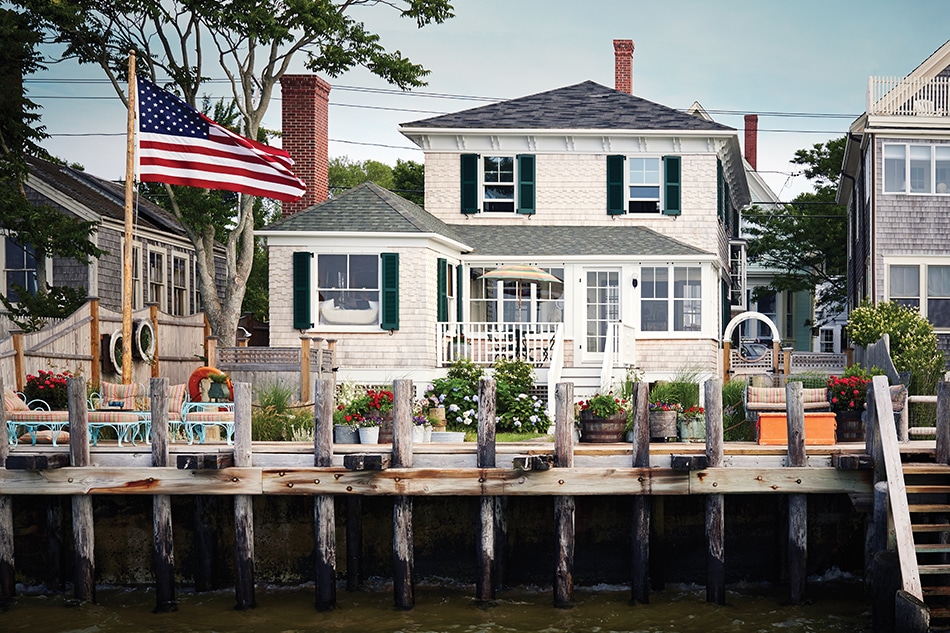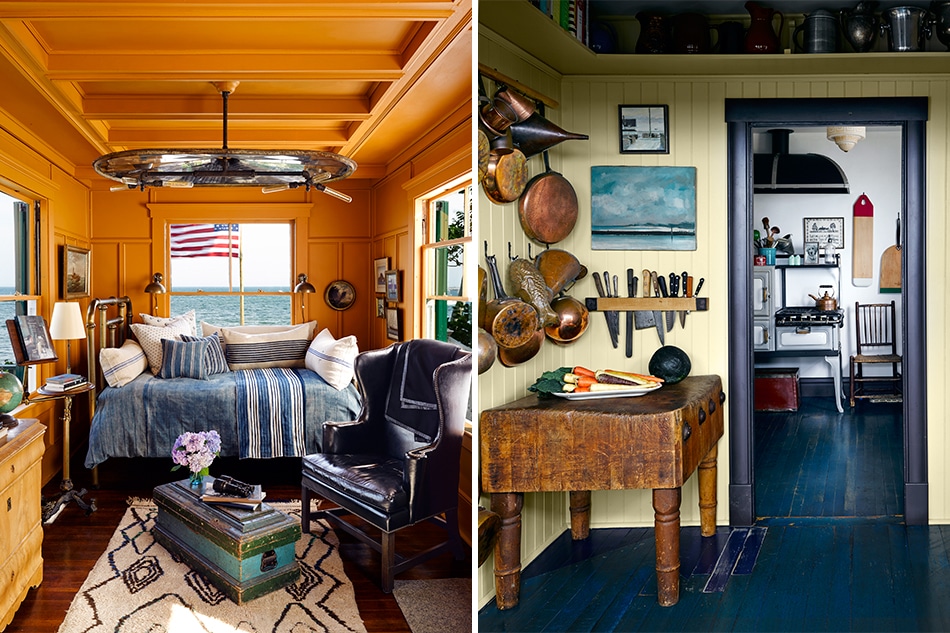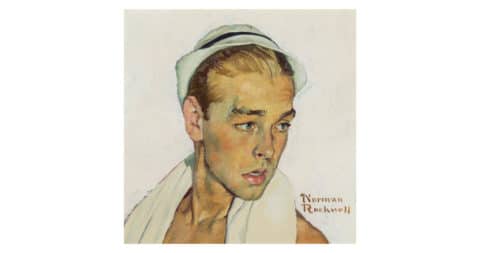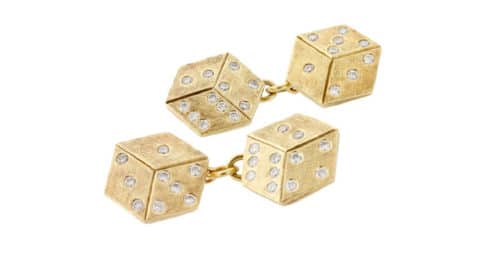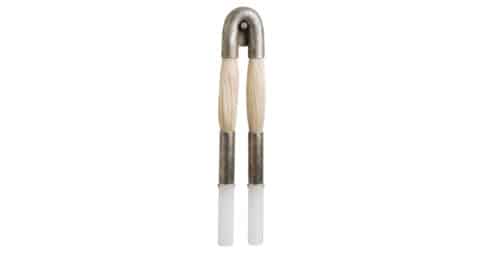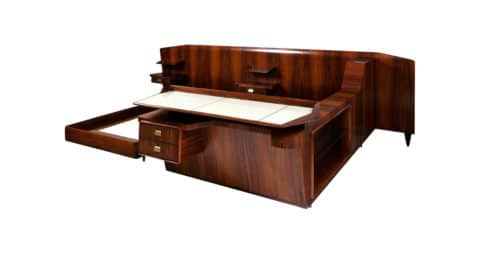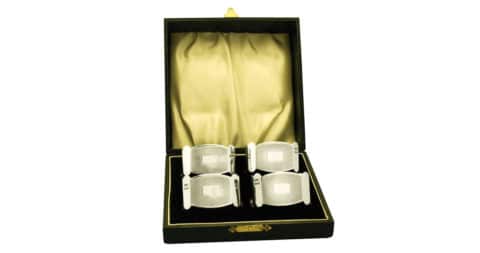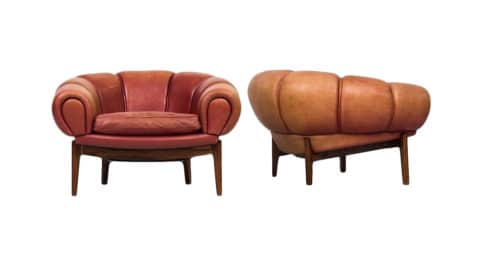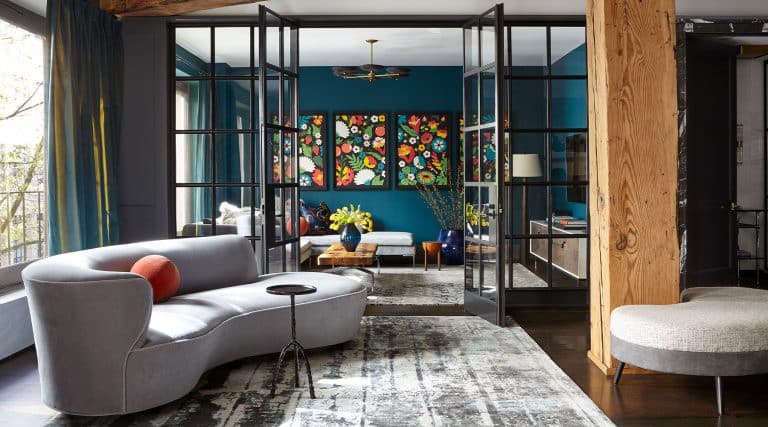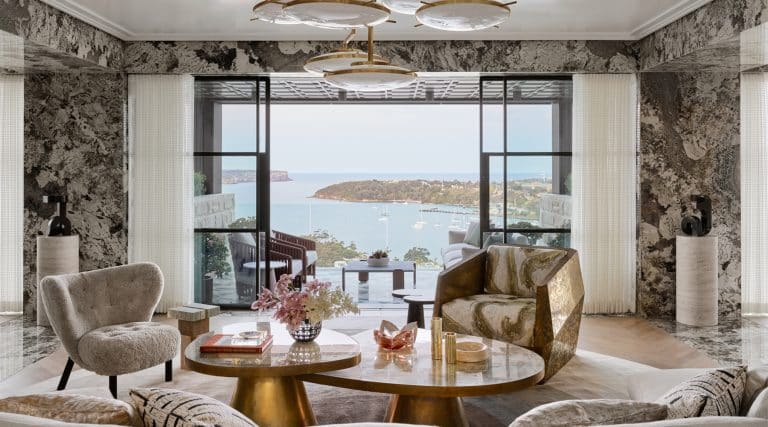
January 30, 2017Designer (and dapper dresser) Ken Fulk is known for his fantastical interiors and events, not to mention a loyal roster of clients who trust him to completely transform their abodes – and surprise them with the results. Some of these are captured in his lush new book, Mr. Ken Fulk’s Magical World. Top: In designing the Sonoma, California, vacation home of Michael and Xochi Birch, known as the Lake House, Fulk was inspired by great resorts of the early 1900s. The salon features a wall of steel and glass, a nod to turn-of-the-century industrial design. All photos by Douglas Friedman, unless otherwise noted, courtesy of Abrams
The last time Introspective visited Ken Fulk, he was living above the store. The San Francisco–based designer had bought an early 1900s brick palazzo, just off Folsom Street, that he dubbed the Magic Factory and filled with dozens of hard-working conjurers. Their output ranged from lavish parties, like the Big Sur wedding of Facebook billionaire Sean Parker, to extravagant renovations of some of the grandest houses in the Bay Area. But the Magic Factory was more than Fulk’s design studio. He converted the building’s ground floor to an appointment-only boutique called Peep Show, which has sold everything from custom Hermès bow ties, jewelry, books and antique furniture to taxidermy squirrel lamps. And the top floor became the place Fulk lived with his longtime husband, Kurt Wootton, and their three golden retrievers.
But six years ago, with Fulk’s company requiring the entire building, he and Wootton bought a house in San Francisco’s peaceful Clarendon Heights neighborhood. It’s “a quirky-crazy architectural marvel. It’s not a grand house, but it has illusions of grandeur,” Fulk says, adding that it “quickly became the backdrop for my very loose interpretation of a Japanese lodge — by way of London, with a dash of Kenya and Denmark for good measure.”
As the work space in the Magic Factory expanded, so did the kinds of projects Fulk was asked to undertake. Already designing fantasy backdrops for San Francisco’s blue bloods and newly moneyed techies, he created a club where they could mingle. “It’s about bringing the tattoo artist and the jazz musician and the socialite and the software billionaire together — to avoid the usual self-segregation,” he says of the two-year-old club, called the Battery. Next, he became creative director for a San Francisco condo building called the Harrison. His contributions include a lobby with cerused oak walls and intricately patterned marble floors, plus a vintage baby grand piano, and a top-floor club that should have been called Over the Top. Meanwhile, he created his first line for Pottery Barn, including items like a nickel-plated cocktail shaker in the shape of a penguin, bringing his off-center sensibility to a mass market.
“It’s about bringing the tattoo artist and the jazz musician and the socialite and the software billionaire together — to avoid the usual self-segregation.”

At Sky High, a Big Sky, Montana, home owned by Fulk’s friends, he outfitted the master bedroom with a custom four-poster bed and antique antler chairs. At the unveiling of the completed residence, Fulk surprised the homeowners with dinner and a performance by a bluegrass band.
Soon after Fulk outgrew the Magic Factory, he found he had outgrown San Francisco, in a way. “A lot of work springs from New York, and a presence in the city meant we could be better stewards of that work,” he says, explaining his decision to buy a Manhattan loft that has become his base of East Coast operations. Already, he is working to reproduce his success at the Harrison as creative director of Henry Hall, an innovative residential community going up near Manhattan’s Hudson Yards. He has an ongoing collaboration with the hot restaurateur Mario Carbone, for whom he designed Sadelle’s, a Soho bagel shop with elements of a French patisserie, and with whom he has a few other projects in the works. And from New York, it’s a short hop to Cape Cod’s Provincetown (where Fulk spends summer weekends in an oceanfront house that he and Wootton rescued — it was, he says, “truly the Grey Gardens of Provincetown”) and to Miami (where he is working on an as-yet-unnamed hotel and pool club). He also occasionally jets to the south of France, where a client has hired him to salvage a 400-year-old farm. “Every year we restore a different part of it,” he says.
When he was first trying to find a place in Manhattan, he looked in Chinatown and the Lower East Side — even considering a former synagogue — before settling on a 5,000-square-foot loft in TriBeCa. (Photographer Bruce Weber is an upstairs neighbor.) The place, he says, “is the visual in my head when I think of life in New York City.”
It is there, in Fulk’s “fantasy loft,” that he greets a reporter. He is dressed sedately, in vintage khakis and an English wool hunting jacket, but on his feet are a pair of furry Gucci slippers. The outfit is a little bit preppy, a little bit showbiz, befitting a man who grew up in rural Virginia admiring Thomas Jefferson but who, in his dazzling new design book, Mr. Ken Fulk’s Magical World (Abrams), compares himself to P.T. Barnum and Florenz Ziegfeld. Indeed, he celebrated the book’s publication at the loft with a party “with a DJ and a crazy swing band and a dancing rabbit.”
Leading a tour of the loft, Fulk points to its vast Edward Wormley sofa, which he had reupholstered in “the green it was meant to be,” and a Fornasetti table that had been in a badly lit room in San Francisco. “Here, I get to see it in the light,” he says. The space is so big that Wootton’s baby grand piano is barely noticeable in the corner.

Fulk and Wootton’s San Francisco home, which Fulk refers to as “the tree house,” was designed by modernist architect Warren Callister. The living room ceilings are nearly 30 feet high, and the windows offer sweeping city views.
Fulk picked up some of the furnishings in his own 22,000-square-foot San Francisco warehouse — the perfect place, he says, “for a professional shopper.” Other pieces came from 1stdibs. (“We’re big fans and early adopters,” he states.) These include 19th-century Snead & Co. cast-iron bookshelves, the kind used at the New York Public Library and the Library of Congress. And at least one item came from a client’s house: a large landscape painting that the client found too somber but that Fulk thought would be perfect for the loft’s large kitchen.
Despite all his hotel and condo projects, homes are still at the heart of Fulk’s practice, and his clients trust him with big chunks of their fortunes. In 2009, he heard about a house for sale on the edge of San Francisco’s Presidio and decided to buy it for “dear friends” who were also clients. The couple was out of town but allowed Fulk to write a check for $1 million to secure the property. When they returned to San Francisco, Fulk threw them a dinner in the house’s dining room. Approval granted, Fulk says the clients “disappeared” for four years, during which he transformed the building into “a soulful, moving house” with most of its fittings hand-drawn and hand-crafted. (Among other features, a coiled ribbon of a spiral stair now links the building’s four floors.) When the renovation was complete, Fulk invited the clients back — for a party at which folk rocker Elvis Perkins sang a song written for the occasion.
The attention Fulk pays to the “reveal” is a big part of what makes his practice special. One couple asked him to turn a house outside Palm Springs into a place where they could “dance on the table,” he says. A year later, he had given them just that. When the clients arrived at the renovated house, there was a camel outside (for rides around the desert property), a Dean Martin impersonator singing on the patio, and synchronized swimmers performing in the pool. Plus, the house was ready to move into. “I know what kind of shampoo they use,” says Fulk, explaining his full-service operation.
“We try to make every moment in our clients’ lives matter,” says Fulk, “whether we’re working on something that only lasts one night or a farm that’s been there for four hundred years and may last another four hundred.” Either way, he says, “there’s always Champagne and a few good tears.”
